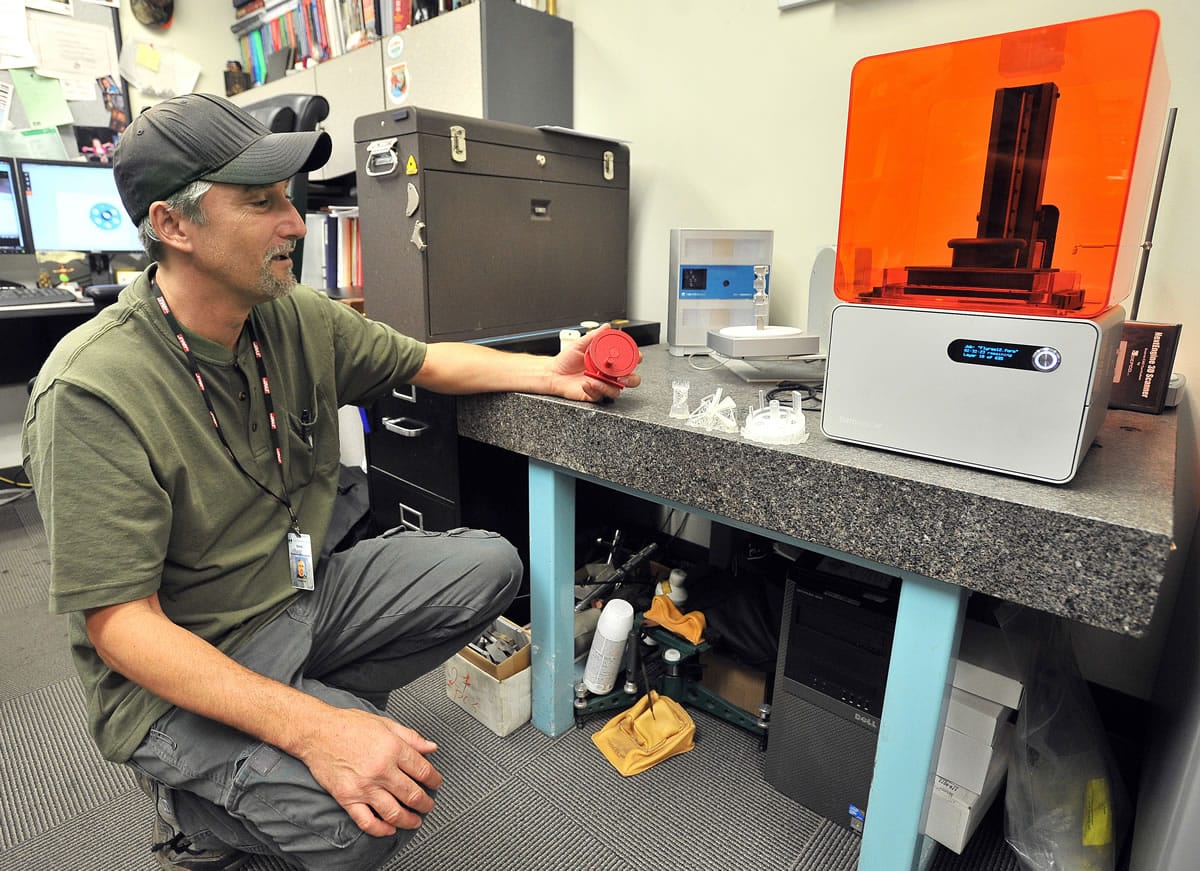MEDFORD, Ore. — The chess piece in Stephen Foster’s office is a study in intricacy: a thumb-sized rook with an elaborate interior spiral staircase and a DNA helix sidekick that pushes through the middle.
“It’s physically impossible to make this part. Can’t do it,” said Foster, Rogue Community College’s department chair of manufacturing and engineering. “I don’t know how to make this part. I don’t think it’s physically possible to do it.”
But because of a technology grant from the Pacific Power Foundation, he didn’t have to. A hamster cage-sized case of gray and orange plastic — with an intricate mess of hardware and software inside — is the artist. It’s a printer, but not the kind that produces resume copies or the latest draft of your novel. The products that emerge from this Form Labs device have real depth to them — and height and width. It’s a three-dimensional printer, and Foster says it will fit right into his curriculum, and will probably never stop running once RCC’s fall term kicks off.
“Now if a student’s got an idea for something, he can draw it and we can make it,” Foster said. “Doesn’t matter how complex it is.”
Foster says he intends to use the 3-D printer for a variety of his classes, including computer-aided design, manufacturing, development prototyping and capstone projects.
“Take what we’ve thrown at you the last two years or six terms, go make it,” he said.
According to the Form Labs website, the printer, a Form 1+ model, starts with a design. The printer then forms that design by pointing a laser at liquid resin, which cures and solidifies it into tiny layers as small as 25 microns across. Comparatively, a strand of hair has a thickness of about 70 microns; a grain of sand, 90.
“If you remember in the ‘Terminator 2’ movie … the guy (T-1000) gets melted and he comes back up out of the pool of material; that’s essentially what this is doing,” Foster said, gesturing toward the printer. “It just does it layer by layer by layer.”
The department already has one similar device, though it is larger, uses a different kind of material, and forms objects in a different way.
Steve Schilling, RCC’s dean of instruction for the School of Science and Technology, said he expects the devices will soon be standard equipment in departments like Foster’s, and for the industry at large.
“It’s an emerging field, especially around innovation,” Schilling said. “This is a way to tap into that imagination that a younger group brings so that we can capture some of tomorrow’s engineers.”
He adds the school is eyeing another 3-D printer, one that prints with carbon fiber instead of plastic resin. He also thinks the printers will be quite common not just in education and business, but in homes.
“There’s not a place in society you won’t see them,” he said.



